What is the Consumer Price Index?
The Consumer Price Index is simply a basket of goods that is used by the Bureau of Labor Statistics to gauge how much price inflation the economy is experiencing. It is “weighted” based on how much of each good the average family uses. Therefore if 41% of your expenses are related to the housing category and 3.6% of your expenses are related to the apparel category and Apparel goes down by 1% and housing goes up by 1% your overall expenses will still be going up. In other words, if you spend $820 on rent a month and $72 on clothes a 1% increase in your rent would add $8.20 to your monthly rent expenses while a -1% would only save you $0.72 on clothes.
In today’s article Doug Short, editor of Advisor Perspectives looks at the makeup of the U.S. Consumer Price Index (CPI) and how much each category has increased since 2000. He also looks at Education costs and Energy and addresses the common misconception that the CPI doesn’t include Food and Energy (which it does). Food and beverages make up 15.3% of the CPI plus Energy is a major component in both the housing and transportation sections. Doug also addresses “Core Inflation” which doesn’t include Food and Energy and what it is used for. Doug also includes an interesting little tidbit about beverages that are included in core inflation that you wouldn’t expect. ~Tim McMahon, editor.
What Inflation Means to You: Inside the Consumer Price Index
By Doug Short
September 17, 2013
What does an increase in inflation mean specifically to your household?
Let’s do some analysis of the Consumer Price Index, the best known measure of inflation. The Bureau of Labor Statistics (BLS) divides all expenditures into eight categories and assigns a relative size to each. The pie chart below illustrates the components of the Consumer Price Index for Urban Consumers, the CPI-U, which I’ll refer to hereafter as the CPI.
The slices are listed in the order used by the BLS in their tables, not the relative size. The first three follow the traditional order of urgency: food, shelter, and clothing. Transportation comes before Medical Care, and Recreation precedes the lumped category of Education and Communication. Other Goods and Services refers to a bizarre grab-bag of odd fellows, including tobacco, cosmetics, financial services, and funeral expenses. For a complete breakdown and relative weights of all the subcategories of the eight categories, here is a useful link.
The chart below shows the cumulative percent change in price for each of the eight categories since 2000
Not surprisingly, Medical Care has been the fastest growing category. At the opposite end, Apparel has actually been deflating since 2000. Another unique feature of Apparel is the obvious seasonal volatility of the contour.
Transportation is the other category with high volatility — much more dramatic and irregular than the seasonality of Apparel. Transportation includes a wide range of subcategories. The volatility is largely driven by the Motor Fuel subcategory. For a closer look at gasoline, see my weekly gasoline updates.
The Ominous Shadow Category of Energy
The BLS does not lump energy costs into an expenditure category, but it does include energy subcategories in Housing in addition to the fuel subcategory in Transportation. Also, energy costs are indirectly reflected in expenditure changes for goods and services across the CPI.
The BLS does track Energy as a separate aggregate index, which in recent years has been assigned a relative importance of 9.561 out of 100. In other words, Uncle Sam calculates inflation on the assumption that energy in one form or another constitutes about 9.56% of total expenditures, over half of which (5.46%) goes to transportation fuels — mostly gasoline. The next chart overlays the highly volatile Energy aggregate on top of the eight expenditure categories. We can immediately see the impact of energy costs on transportation.
The next chart will come as no surprise to families footing the bill for college tuition. Here I’ve separately plotted the College Tuition and Fees subcategory of the Education and Communication expenditure category. Note that the steady staircase in this cost matches the annual cost increases in late summer for each academic year. As we see in this non-seasonally adjusted data, the latest data shows the riser for 2013 stair-step.
Core Inflation
Economists and policy makers (e.g., the Federal Reserve) pay close attention to Core Inflation, which is the overall inflation rate excluding Food and Energy. Now this is a somewhat peculiar metric in that one of the exclusions, Energy, is an aggregate that combines specific pieces of two consumption categories: 1) Transportation fuels and 2) Housing fuels, gas, and electricity. The other, Food, is the major part of the Food and Beverage category. I should explain that “beverage” for the BLS means alcoholic beverages. So coffee and Coca Colas are excluded from Core Inflation, but Budweiser and Jack Daniels aren’t.
The next chart shows us the annualized rate of change (solid lines) and the cumulative change (dotted lines) in CPI and Core CPI since 2000.
Consumers, especially those who’ve managed expenses over several years, are most closely attuned to the top line.
Inflation and Your Household
The universal response is to moan over price increases and take delight when prices are cheaper. But in reality, households vary dramatically in the impact that inflation has upon them. When gasoline prices skyrocket, a two-earner suburban family with long car commutes suffers far more than the metro family with short subway commutes or retirees with no commute. And the pain is even more extreme for low income households whose grocery money shinks with gas prices rise. And remember, Uncle Sam excludes energy costs from Core Inflation.
Households with high medical costs are significantly more vulnerable than comparable households with low expenses in this category.
The BLS weights College Tuition and Fees at 1.734% of the total expenditures. But for households with college-bound children, the relentless growth of tuition and fees can cripple budgets. Often those costs get bundled into loans that saddle degree recipients with exorbitant debt burdens. Consider the following numbers from the CollegeBoard.com website:
- Public four-year colleges charge, on average, $8,655 per year in tuition and fees for in-state students.
- Public four-year colleges charge, on average, $21,706 per year in tuition and fees for out-of-state students.
- Private nonprofit four-year colleges charge, on average, $29,056 per year in tuition and fees.
Of course, Mr. Bernanke would point out that, with a healthy dose of Core Inflation (extended of course to wages), those debt-burdened college grads will pay down the loans with inflated dollars.
Which brings us back to the Fed’s efforts to manage the level of Core Inflation. At the macro level, Mr. Bernanke and his Federal Reserve colleagues can doubtless make a theoretical argument for manipulating inflation. But are their efforts — ZIRP and Quantitative Easing — achieving the desired goal? The results thus far haven’t been encouraging.
Inflation has been tame in recent months, although the latest seasonally adjusted categories are off their interim lows. However, the one thing we can be certain about is this: Increases in inflation will have a painful effect on lower income households, those on fixed incomes, those with higher ratios of transportation costs, college tuition and any household whose discretionary spending is more dream than reality.
This article originally appeared in Advisor Perspectives and is reprinted here by permission.
See Also:
- What is Quantitative Easing?
- What is the Real Definition of Inflation?
- Cost of Living
- Disinflation – What is it?
- What is the Phillips Curve?

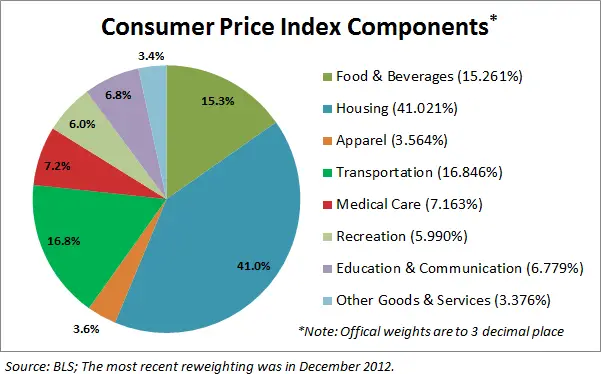
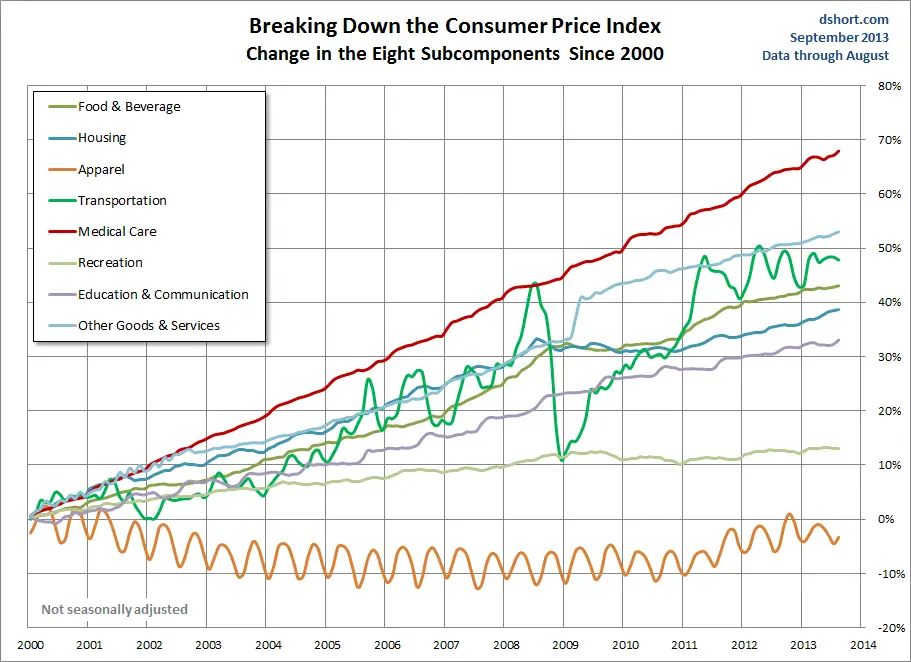
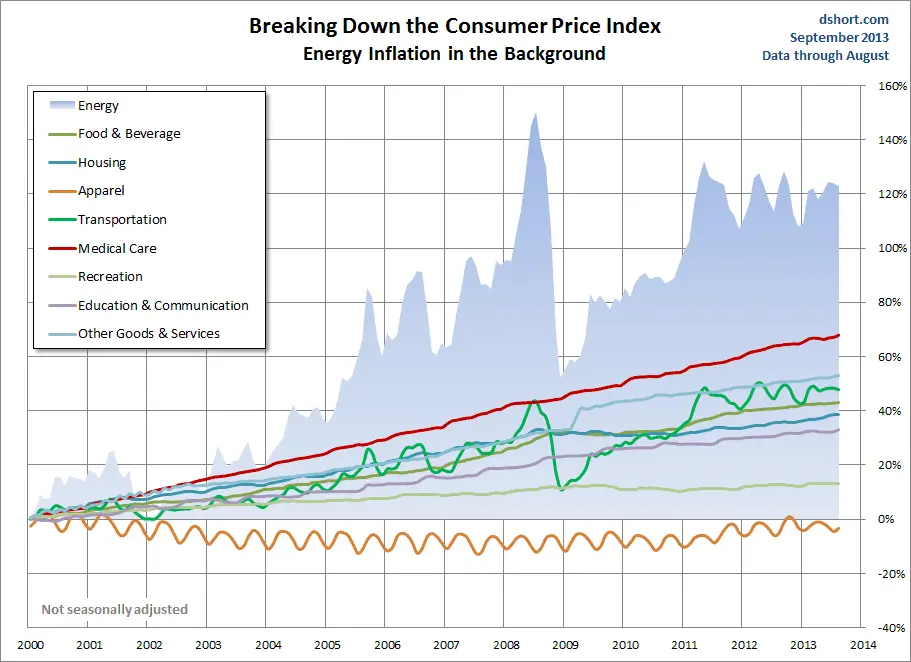
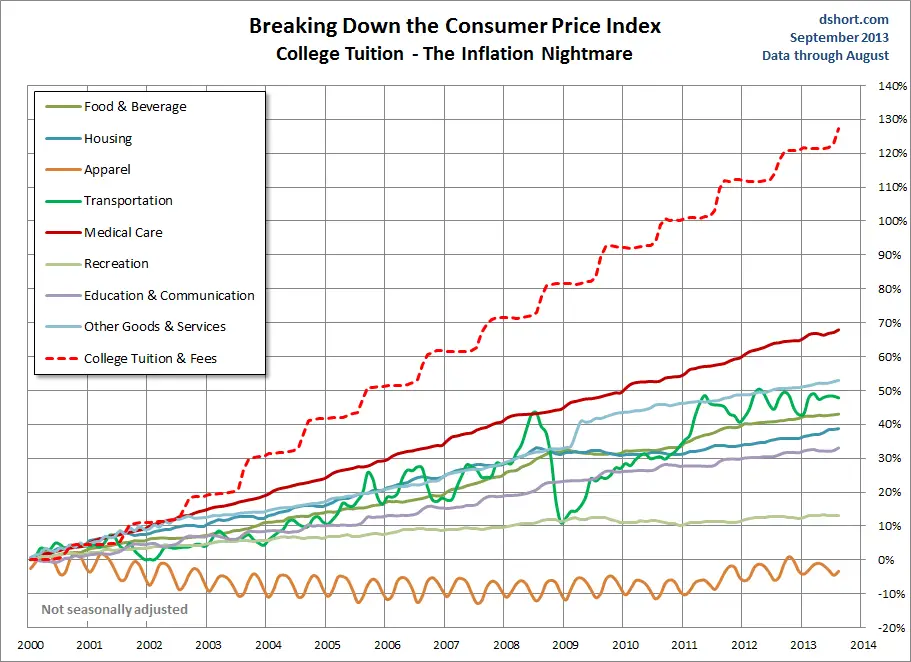
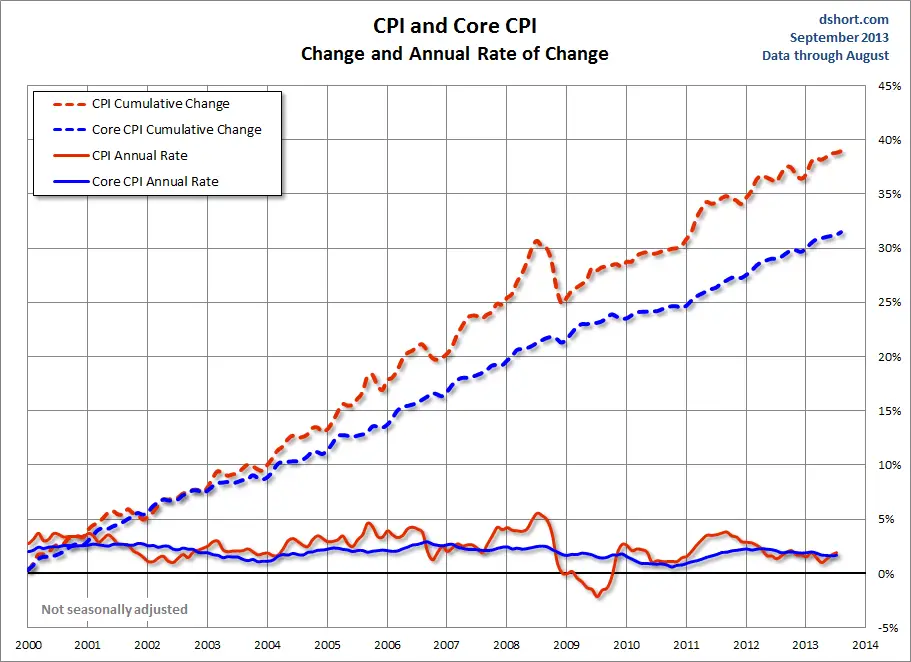





Leave a Reply